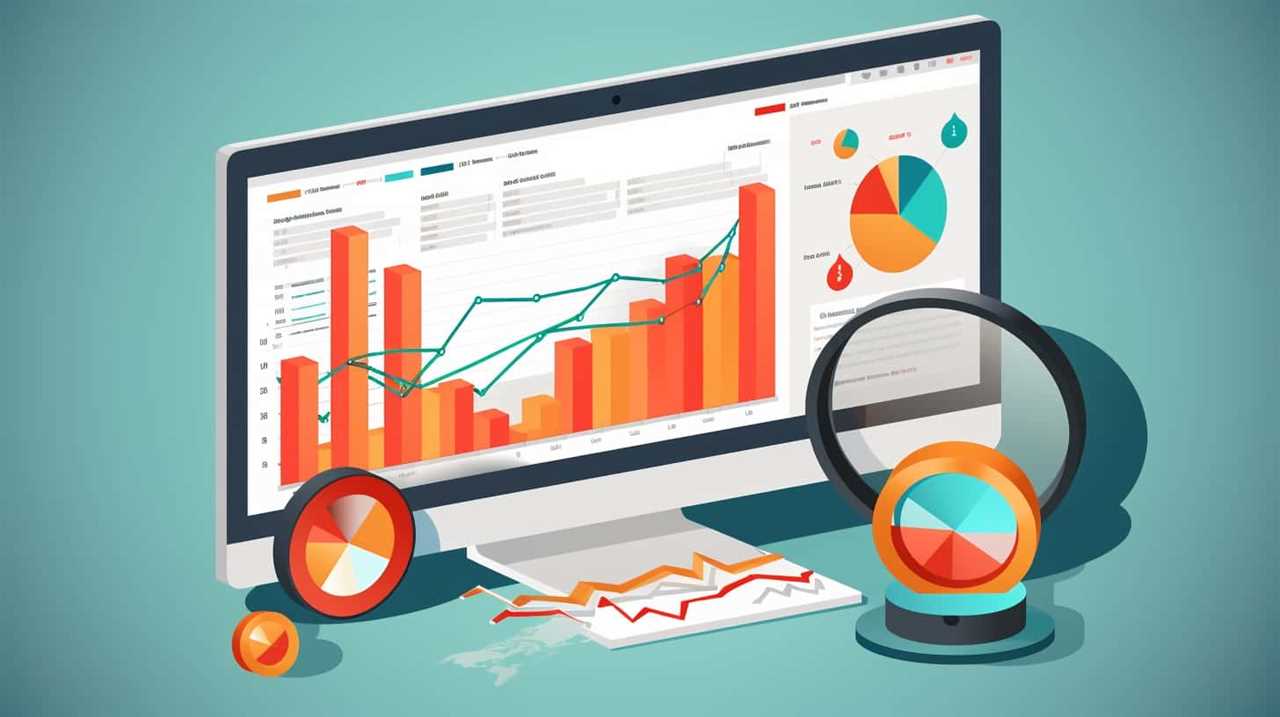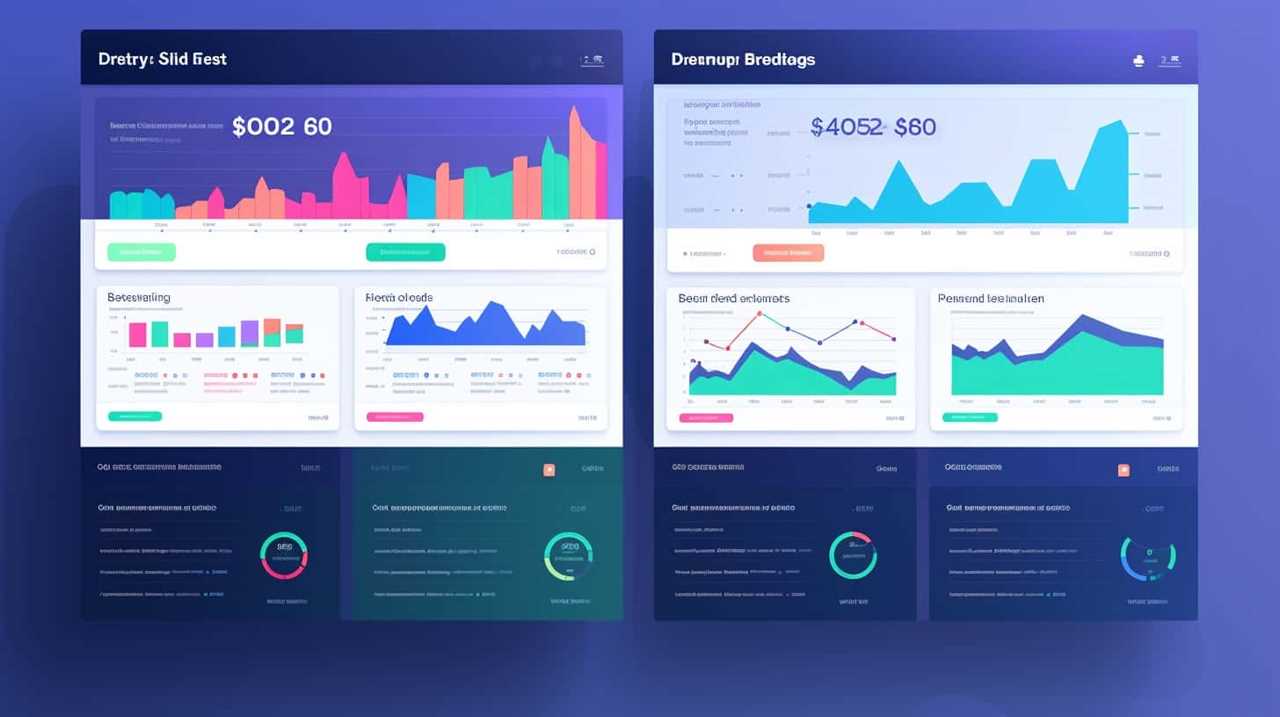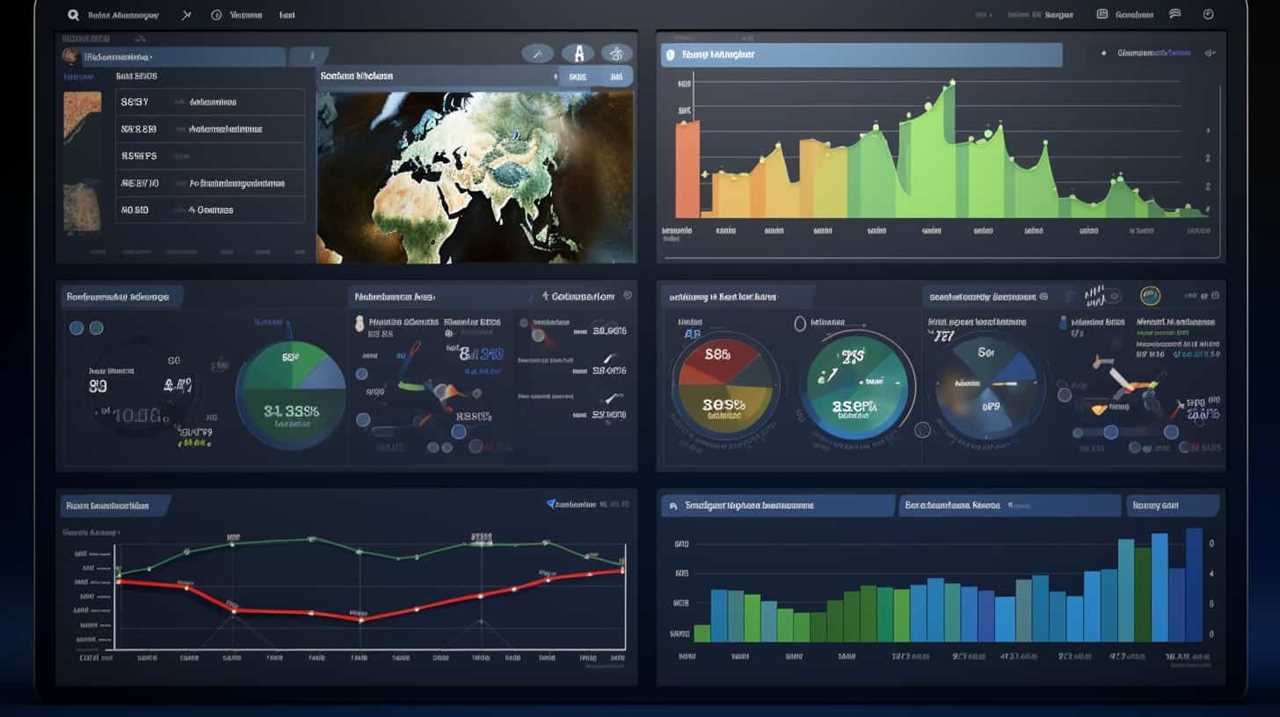Brewpubs are striving for success online, and as specialists in SEO, we understand the secret to their triumph. By delving into the world of search engine optimization, we open up opportunities for unparalleled online visibility and growth.
By conducting thorough keyword research, optimizing on-page elements, building high-quality backlinks, and leveraging local SEO strategies, craft beer bars can quench their thirst for digital dominance.
With engaging content and strategic social media utilization, we monitor and analyze SEO performance, guiding these bars towards mastery in the digital realm.
Understanding the Importance of SEO
In this article, we’ll explore the importance of SEO for craft beer bars.

Understanding the importance of SEO is crucial for the success of any craft beer bar in the digital landscape. With the increasing competition in the industry, it’s essential to implement effective SEO strategies to stand out from the crowd and attract more customers.
One of the first steps in SEO is conducting keyword research. By identifying the most relevant and popular keywords related to craft beer bars, you can optimize your website content and ensure that it ranks higher in search engine results. This involves optimizing on-page elements such as meta tags for SEO and incorporating keyword optimization techniques throughout your website.
Another important aspect of SEO is optimizing images by using proper alt text. This helps search engines understand the content of the images and improves overall website visibility. Additionally, building high-quality backlinks from reputable websites can boost your website’s authority and visibility in search results.
Leveraging local SEO strategies is also crucial for craft beer bars, as it helps target customers in the local area. This includes creating engaging content that’s relevant to the local community, utilizing social media platforms for SEO purposes, and implementing hashtag optimization strategies to increase visibility.

Engaging with influencers in the craft beer industry can also help improve your SEO performance. By partnering with influencers who have a strong online presence and credibility, you can increase brand awareness and attract more customers to your craft beer bar.
Monitoring and analyzing your SEO performance is essential to determine the effectiveness of your strategies. By tracking key metrics such as website traffic, bounce rate, and keyword rankings, you can make data-driven decisions and optimize your SEO efforts accordingly.
Lastly, optimizing for user experience and voice search is becoming increasingly important. By ensuring that your website is user-friendly, mobile-responsive, and optimized for voice search queries, you can provide a seamless and enjoyable experience for your customers.
Conducting Keyword Research
To effectively optimize a craft beer bar’s website for search engines, it’s essential that we begin by conducting keyword research. This crucial step allows us to identify the most relevant and high-performing keywords that will attract potential customers to the website.

Here are four key reasons why conducting keyword research is vital for the success of a craft beer bar’s SEO strategy:
- Understanding craft beer trends: By researching popular craft beer trends, we can uncover keywords that are currently in demand. This helps us tailor our website content to match the interests and preferences of our target audience.
- Identifying competitor analysis: Analyzing keywords used by our competitors allows us to gain insights into their SEO strategy. By understanding what keywords they’re targeting, we can identify opportunities to differentiate ourselves and capture potential customers who may be searching for similar craft beer offerings.
- Increasing website visibility: By incorporating relevant keywords into our website content, meta tags, and URLs, we improve our chances of ranking higher in search engine results. This increased visibility puts our craft beer bar in front of more potential customers.
- Driving targeted traffic: By targeting specific keywords that align with the services and atmosphere of our craft beer bar, we can attract highly relevant and motivated visitors to our website. This targeted traffic increases the likelihood of converting visitors into paying customers.
Conducting thorough keyword research enables us to optimize our craft beer bar’s website effectively, ensuring that it ranks well in search engine results and attracts the right audience.
Optimizing On-Page Elements
When it comes to optimizing on-page elements for SEO, there are several key points to consider.
First, we need to focus on meta tags, which play a crucial role in telling search engines what our webpages are about.

Second, we should employ keyword optimization techniques to ensure that our content is relevant and easily discoverable by our target audience.
Lastly, it’s important to implement best practices for image alt text, as this can improve accessibility and enhance our search engine visibility.
Meta Tags for SEO
Our approach to optimizing on-page elements for SEO at craft beer bars involves effectively utilizing meta tags. Meta tags are snippets of code that provide information about a webpage to search engines and website visitors. When it comes to craft beer bars, meta tags play a crucial role in attracting the right audience and improving search engine rankings.
Here are four key ways we optimize meta tags for SEO:

- Title Tag: We craft compelling and keyword-rich title tags that accurately describe the content of each webpage.
- Meta Description: We write concise and enticing meta descriptions that encourage users to click through to the website.
- Meta Keywords: While not as important as they used to be, we still include relevant keywords in the meta keywords tag to provide additional context to search engines.
- Open Graph Tags: We optimize open graph tags to ensure proper display and sharing of craft beer bar content on social media platforms.
Keyword Optimization Techniques
How can we optimize on-page elements to improve keyword optimization for craft beer bars?
Crafting an effective content marketing strategy is essential in driving organic traffic to your website. Start by conducting keyword research to identify relevant and high-volume search terms that resonate with your target audience. Incorporate these keywords naturally into your website’s title tags, meta descriptions, heading tags, and image alt tags.
Additionally, focus on creating high-quality, keyword-rich content that provides value to your audience and encourages social sharing. Implementing link building tactics, such as guest blogging or reaching out to industry influencers for backlinks, can also improve your website’s visibility and authority.
Regularly monitoring and analyzing your keyword performance will allow you to make data-driven optimizations and stay ahead of the competition in the craft beer bar market.

Image Alt Text Best Practices
To optimize on-page elements, we recommend following best practices for crafting image alt text for craft beer bars. Image alt text is important for both accessibility and SEO purposes. Here are some best practices for image alt text optimization:
- Be descriptive: Use clear and concise language to describe the image accurately. Include relevant keywords related to the image and craft beer bars.
- Keep it concise: Keep the alt text short and to the point. Aim for around 125 characters or less.
- Avoid keyword stuffing: While it’s important to include relevant keywords, avoid overloading the alt text with too many keywords. Focus on providing useful information instead.
- Be specific: If there are multiple images on a page, make sure each alt text is unique and specific to the image it describes.
By following these image alt text best practices, you can enhance the accessibility of your website and improve its visibility in search engine results.
Now, let’s move on to the next topic – building high-quality backlinks.
Building High-Quality Backlinks
Craft beer bars benefit from the use of high-quality backlinks. Link building strategies play a crucial role in improving the online visibility and authority of craft beer bars. By obtaining backlinks from reputable and relevant sources, craft beer bars can enhance their website’s search engine rankings and attract more organic traffic.

One effective link building strategy for craft beer bars is to seek out guest blogging opportunities. By writing informative and engaging articles for other websites in the craft beer industry, craft beer bars can’t only showcase their expertise but also gain valuable backlinks to their own website. These backlinks from authoritative sources can significantly boost the credibility and visibility of the craft beer bar’s website.
Craft beer bars should also focus on acquiring backlinks from local directories, industry associations, and influential bloggers. These sources can provide high-quality backlinks that are relevant to the craft beer niche. Additionally, collaborating with other local businesses, such as breweries and restaurants, can lead to reciprocal backlinks and mutually beneficial partnerships.
When building backlinks, it’s crucial to prioritize quality over quantity. Craft beer bars should aim to secure backlinks from reputable websites with high domain authority and relevant content. By focusing on high-quality backlinks, craft beer bars can improve their website’s search engine rankings, drive targeted traffic, and establish themselves as authorities in the craft beer industry.
Leveraging Local SEO Strategies
We optimize our digital presence by leveraging local SEO strategies for craft beer bars. Local SEO is crucial for businesses that rely on attracting customers from their immediate vicinity.

Here are four key strategies to focus on when it comes to local SEO for craft beer bars:
- Local citation building: Creating accurate and consistent online listings across various directories and platforms is essential. This includes ensuring that your business name, address, and phone number (NAP) are consistent across all listings.
- Online review management: Positive reviews can greatly impact your online visibility and reputation. Encourage customers to leave reviews on platforms like Google My Business, Yelp, and Facebook. Respond promptly to both positive and negative reviews to show your commitment to customer satisfaction.
- Location-specific keywords: Incorporate keywords that include your city, neighborhood, or other location-specific terms into your website content. This will help search engines recognize your relevance to local searches.
- Google My Business optimization: Claim and optimize your Google My Business profile. Ensure that all information is accurate and up-to-date, including opening hours, contact details, and images. Regularly post updates and engage with customers through the platform.
Creating Engaging Content for SEO
One effective way to enhance SEO for craft beer bars is by crafting engaging content that resonates with our target audience. By creating valuable and interesting content, we can increase user engagement and improve our website’s visibility in search engine results.
To develop an effective content strategy, it is important to understand our target audience and their preferences. Conducting market research and analyzing customer data can provide valuable insights into the type of content that will resonate with them. Additionally, incorporating keywords related to craft beer, local breweries, and beer tasting events can help optimize our content for search engines.
Here is a table showcasing some ideas for engaging content that can boost SEO for craft beer bars:

| Content Idea | Target Audience |
|---|---|
| Beer Tasting Guides | Craft beer enthusiasts looking to expand their knowledge |
| Brewery Spotlights | Locals interested in learning about nearby breweries |
| Food and Beer Pairing Tips | Foodies and beer lovers seeking new flavor combinations |
| Behind-the-Scenes Brewery Tours | Beer enthusiasts curious about the brewing process |
Utilizing Social Media for SEO
When it comes to utilizing social media for SEO, there are two key points to consider: hashtag optimization strategies and engaging with influencers.
Hashtags play a crucial role in increasing the visibility of your craft beer bar on platforms like Instagram and Twitter. By using relevant and popular hashtags, you can attract a larger audience and improve your search engine rankings.
Collaborating with influencers in the craft beer industry can help you reach a wider audience and gain valuable backlinks, further boosting your SEO efforts.
Hashtag Optimization Strategies
Our hashtag optimization strategies are essential for leveraging social media to enhance SEO for craft beer bars. By utilizing hashtag analytics and staying up-to-date with hashtag trends, we can maximize the visibility and reach of our social media posts.

Here are four key strategies we employ:
- Research popular hashtags in the craft beer industry and incorporate them into our posts to increase discoverability.
- Create unique and branded hashtags that represent our craft beer bar and encourage customers to use them, increasing engagement and user-generated content.
- Monitor and analyze the performance of our hashtags using analytics tools to identify which ones are most effective in driving traffic and conversions.
- Stay current with trending hashtags related to craft beer events, holidays, and industry news to join conversations and attract a wider audience.
By optimizing our hashtags in these ways, we can enhance our social media presence, improve SEO, and attract more customers to our craft beer bar.
Moving forward, let’s explore another powerful strategy: engaging with influencers.
Engaging With Influencers
To amplify our social media presence and improve SEO, we actively engage with influencers within the craft beer community. Finding niche influencers who’ve a strong following and influence in the craft beer world is crucial for our digital success.

These influencers have the power to reach a large audience and promote our craft beer bar, increasing brand visibility and driving traffic to our website. To measure the impact of these influencers, we track metrics such as engagement, reach, and conversions.
Monitoring and Analyzing SEO Performance
We regularly track and evaluate the performance of our SEO strategies in order to measure their effectiveness and make data-driven improvements. Monitoring and analyzing SEO performance is crucial for ensuring that our craft beer bar’s digital presence is optimized for search engines and attracting potential customers.
Here are four key techniques we use to track and analyze our SEO performance:
- Keyword Analysis: We use tools like Google Analytics and SEMrush to identify the keywords that are driving traffic to our website and determine their ranking on search engine results pages (SERPs). This helps us understand which keywords are performing well and which ones need improvement.
- Traffic Analysis: By monitoring website traffic, we can assess the effectiveness of our SEO strategies. We analyze metrics such as organic search traffic, referral traffic, and bounce rate to gauge the quality and relevance of our website content.
- Backlink Analysis: Backlinks are an important factor in SEO. We use tools like Moz and Ahrefs to analyze the quantity and quality of backlinks pointing to our website. This helps us identify potential areas for improvement and develop link building strategies.
- Competitor Analysis: Understanding how our competitors are performing in terms of SEO can provide valuable insights. We analyze their keyword rankings, backlink profiles, and content strategies to identify areas where we can outperform them.
Frequently Asked Questions
How Can Craft Beer Bars Utilize SEO to Attract More Customers to Their Physical Location?
Craft beer bars like ours can attract more customers to our physical location by utilizing SEO. We focus on social media marketing strategies and collaborate with influencers to create a digital presence that drives foot traffic.

Are There Any Specific Keyword Research Tools That Are Recommended for Craft Beer Bars?
Craft beer keyword research tools are essential for craft beer bars. Local SEO is crucial for attracting customers to our physical location. We recommend using tools like SEMrush and Moz for effective keyword research and optimization.
What Are Some Effective On-Page Elements That Craft Beer Bars Can Optimize for Better Seo?
Craft beer bars can optimize on-page elements for better SEO by focusing on website optimization and implementing a strategic content strategy. These techniques can enhance visibility and drive organic traffic to their digital platforms.
How Can Craft Beer Bars Build High-Quality Backlinks to Improve Their Website’s Seo?
Building high-quality backlinks is essential for improving a craft beer bar’s website SEO. We achieve this through partnerships, a strong social media presence, and collaborations. These strategies help establish authority and drive organic traffic to our site.
What Are Some Local SEO Strategies That Craft Beer Bars Can Implement to Increase Their Visibility in Their Local Area?
To increase our local visibility, we can leverage local directory listings for improved SEO. Engaging with our community on social media is another effective strategy. Let’s pour our efforts into these local SEO tactics for digital success.

Conclusion
In conclusion, mastering SEO for craft beer bars is crucial for achieving digital success.
By understanding the importance of SEO, conducting keyword research, optimizing on-page elements, and building high-quality backlinks, craft beer bars can improve their website’s visibility in search engine rankings.
Additionally, leveraging local SEO strategies can help craft beer bars attract more online visitors from their target geographic area.
Creating engaging content and utilizing social media platforms can further enhance their online presence and engage with their audience.

Lastly, monitoring the performance of their SEO efforts allows craft beer bars to make data-driven decisions and continuously improve their digital marketing strategy.
By implementing these strategies, craft beer bars can pour into digital success and reach a wider audience in the competitive online landscape.










